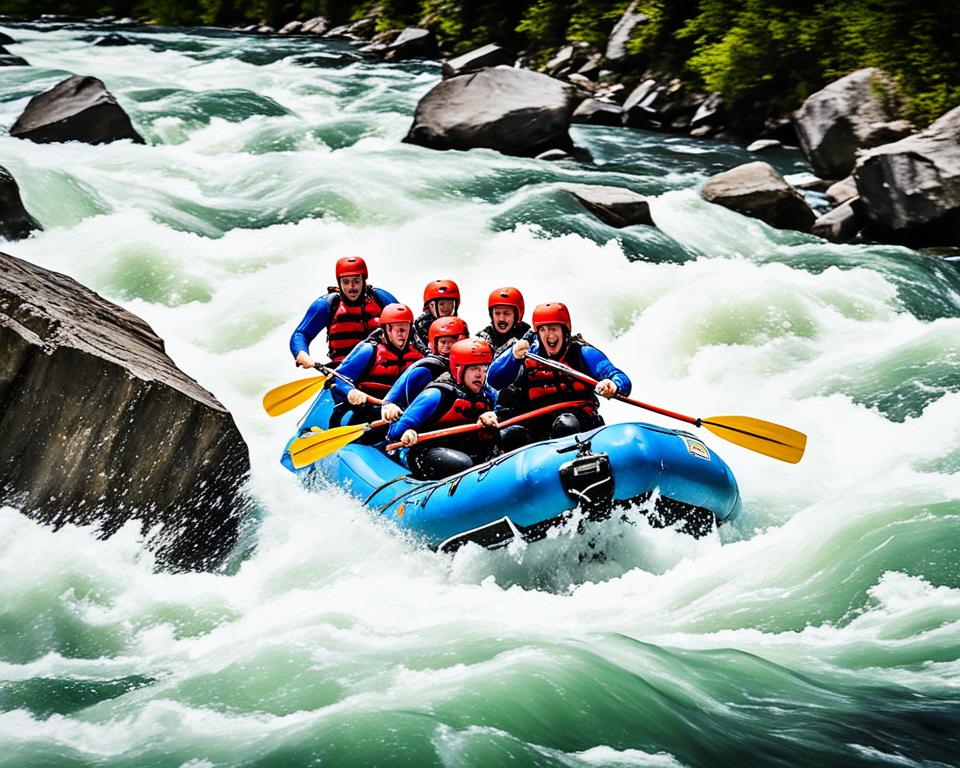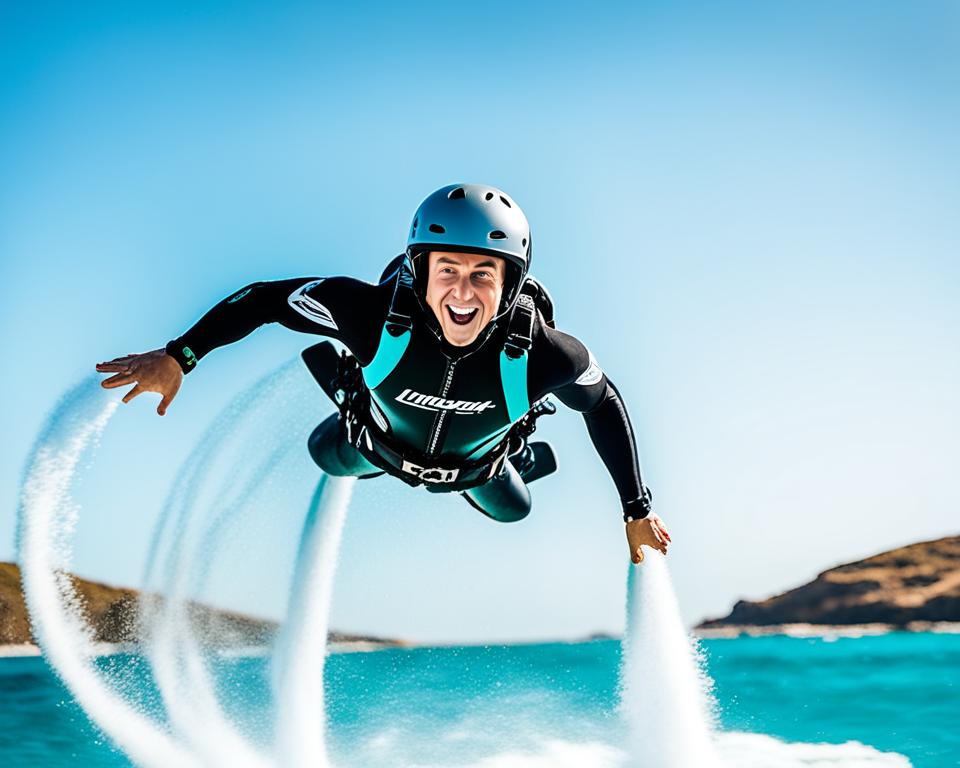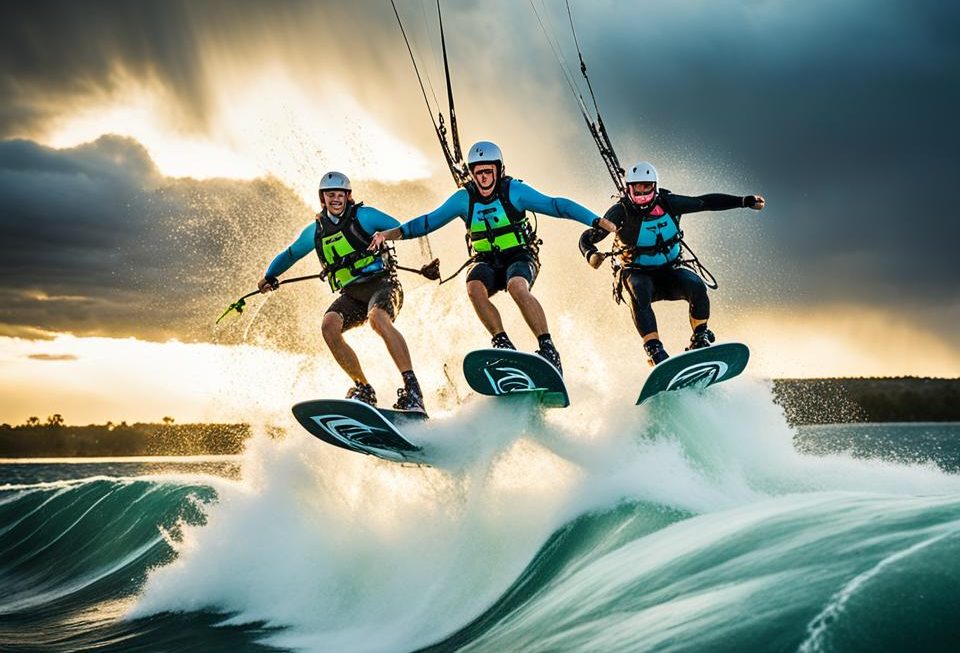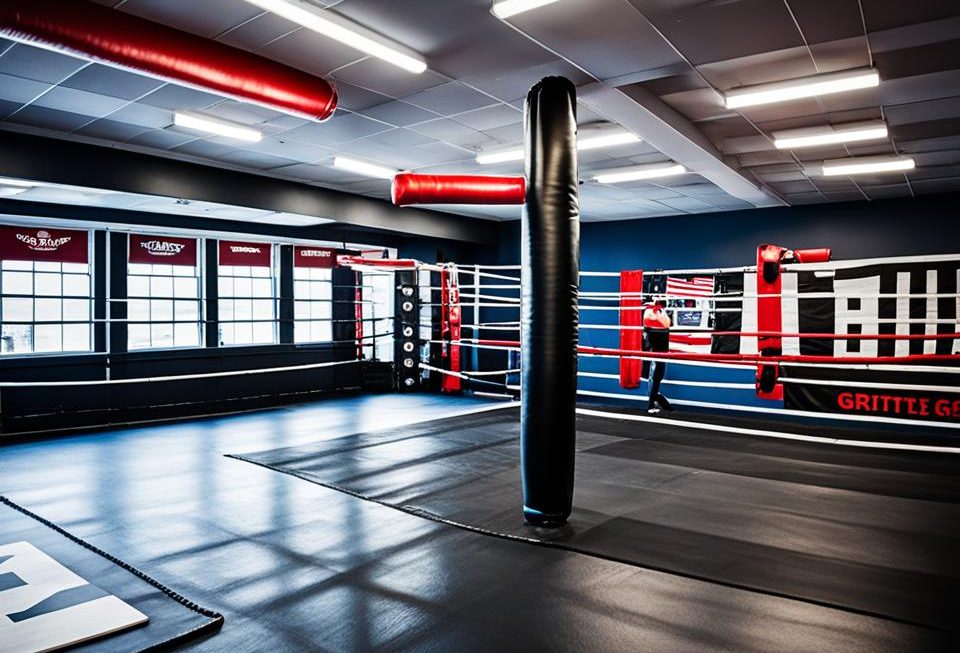Embark on an exhilarating journey through the captivating realm of extreme water sports. From conquering the whitewater rapids of hydrospeeding to soaring above the waves with wakeboarding and kitesurfing, thrill-seekers will discover a world of adrenaline-fueled adventures that push the boundaries of what’s possible on the water. Dive in and explore the specialized gear, techniques, and top destinations for a variety of extreme aquatic activities, including waterfall kayaking, cliff diving, windsurfing, and flyboarding.
Read interesting things at : vetocellacvgummies
Key Takeaways
- Discover the thrilling world of extreme water sports, from hydrospeeding to cliff diving.
- Explore the specialized gear, techniques, and top destinations for a variety of exhilarating aquatic activities.
- Experience the adrenaline rush of conquering whitewater rapids and soaring above the waves.
- Learn about the safety considerations and environmental impact of these extreme sports.
- Find resources and tips for beginners to get started in the world of extreme water sports.
Thrill-Seekers’ Paradise: An Introduction to Extreme Water Sports
The allure of extreme water sports lies in their ability to captivate the senses and push the boundaries of what is possible on the aquatic realm. These adrenaline-fueled activities, such as hydrospeeding, waterfall kayaking, and cliff diving, offer a thrilling escape for adventure-seekers, providing a unique opportunity to conquer the power of nature.
Adrenaline Rush
Extreme water sports deliver an adrenaline rush like no other, as participants navigate treacherous whitewater rapids, plunge from towering cliffs, and soar above the waves. The sheer exhilaration of pushing the limits and conquering the elements is what draws countless thrill-seekers to these captivating disciplines.
Nature’s Playground
The natural settings that serve as the backdrop for extreme water sports are nothing short of breathtaking. From the rugged landscapes of cascading waterfalls to the pristine, azure waters of tropical paradises, these extreme water sports offer a unique opportunity to immerse oneself in the raw beauty of the world around us.
Safety First
While the allure of extreme water sports is undeniable, safety must always remain the top priority. Participants must be well-versed in the necessary gear, techniques, and risk management strategies to ensure a safe and rewarding experience. Proper training and preparation are essential to navigating the inherent challenges and dangers of these thrilling activities.
Hydrospeeding: Conquering Whitewater Rapids
Hydrospeeding, also known as riverboarding, is an exhilarating extreme water sport that challenges participants to ride the powerful currents of whitewater rapids using only a specialized bodyboard. Mastering this thrilling discipline requires the right equipment and a deep understanding of the necessary techniques.
Gear Up
Proper gear is essential for a safe and successful hydrospeeding experience. Riders must don a high-impact wetsuit, protective helmet, and specialized safety gear to navigate the churning whitewater rapids. The right equipment not only safeguards the rider but also enhances their control and maneuverability in the turbulent waters.
Technique Mastery
Navigating whitewater rapids on a bodyboard demands exceptional technique. Hydrospeeding enthusiasts must learn to maintain control, read the water, and avoid hazards as they ride the powerful currents. Developing the necessary skills through practice and instruction is crucial for a thrilling yet responsible hydrospeeding adventure.
Waterfall Kayaking: Defying Gravity
Waterfall kayaking takes thrill-seekers to new heights, literally, as they plunge down towering waterfalls in specialized kayaks. This exhilarating sport demands a level of preparation and skill that sets it apart from other extreme water activities.
Preparation is Key
Engaging in waterfall kayaking requires meticulous preparation, from selecting the right equipment to honing the necessary skills and mental fortitude. Kayakers must invest in high-quality, impact-resistant gear, including helmets, life jackets, and specialized kayaks designed to withstand the immense force of cascading water.
Developing the proper technique is crucial, as navigating the sheer power and unpredictability of nature’s waterfalls requires exceptional boat control, split-second decision-making, and a deep understanding of hydraulic forces. Aspiring waterfall kayakers must undertake extensive training, mastering skills such as eddy turns, river reading, and roll techniques, to ensure a safe and successful descent.
Navigating Nature’s Power
Waterfall kayaking is not for the faint of heart, as it involves confronting the raw power and unpredictability of nature. Navigating the turbulent waters and plunging over the edge of a waterfall demands a level of mental fortitude and respect for the risks involved that sets this sport apart.
Experienced waterfall kayakers must meticulously assess the conditions, identify potential hazards, and develop a comprehensive risk management strategy before embarking on their descent. This includes scouting the waterfall, analyzing water flow patterns, and ensuring a clear exit strategy in case of unexpected challenges or emergencies.
Cliff Diving: Soaring Like an Aquatic Bird
Cliff diving is the ultimate test of courage and skill, as participants leap from towering rock formations into the waters below. This extreme cliff diving sport demands precise form, timing, and the ability to overcome the natural fear of plunging from great heights. Cliff divers must carefully select their jump sites, assess the risks, and execute their dives with perfect execution to ensure a safe and thrilling experience.
The allure of cliff diving lies in the sheer exhilaration of defying gravity, as divers soar through the air like aquatic birds before gracefully entering the water below. This sport attracts adrenaline-seekers who relish the challenge of overcoming their own mental barriers and honing the physical prowess required to execute flawless dives.
Preparation is key in the world of cliff diving, as participants must meticulously assess the jump site, evaluate the water depth, and ensure the area is free of hazards. Safety protocols, such as the use of spotters and rescue teams, are also crucial to mitigate the inherent risks associated with this extreme sport.
From the breathtaking cliffs of Hawaii’s Na Pali Coast to the iconic Blue Lagoon in Iceland, cliff diving enthusiasts can find a multitude of stunning locations around the world that offer the perfect setting for their daring feats. As this extreme sport continues to captivate audiences, the pursuit of this aquatic thrill remains a testament to the human spirit’s unwavering desire to push the boundaries of what’s possible.
Wakeboarding: Carving Waves with Style
Wakeboarding is the perfect blend of surfing’s adrenaline and skateboarding’s acrobatics, as riders carve and launch across the water’s surface behind a high-powered boat. Mastering this thrilling water sport requires the right equipment, technical prowess, and access to top-notch destinations.
Equipment Essentials
The foundation of a successful wakeboarding experience lies in the proper gear. From the specialized wakeboard and binding system to the tow rope and boat setup, each component plays a crucial role in ensuring a safe and smooth ride. Riders must invest in high-quality, well-maintained equipment to maximize performance and minimize the risks associated with this extreme sport.
Mastering the Tricks
Wakeboarding is not merely about gliding across the water; it’s about executing gravity-defying tricks and maneuvers that showcase the rider’s skill and style. Mastering the art of wakeboarding requires dedicated practice, honing techniques such as jumps, spins, and grabs to perform complex routines that leave onlookers in awe.
Popular Destinations
The world is dotted with stunning locations that cater to the needs of wakeboarding enthusiasts. From the crystal-clear waters of the Caribbean to the serene lakes of the Pacific Northwest, these destinations offer the perfect conditions for thrilling wakeboarding adventures. Riders can explore a variety of terrains, from gentle swells to challenging wakes, catering to all skill levels and preferences.
Whitewater Rafting: Conquering Turbulent Rapids
Whitewater rafting is a thrilling team sport that pits adventurers against the raw power of raging rivers. This exhilarating activity requires coordination, communication, and a deep understanding of the different classifications of rapids to navigate the turbulent waters successfully.
Team Effort
Whitewater rafting is a true team endeavor, where every member of the crew plays a crucial role in steering the raft, paddling in sync, and responding to the ever-changing river conditions. Effective communication and collaboration are essential, as each team member’s actions can significantly impact the overall performance and safety of the group.
Rapid Classifications
The rapids encountered during whitewater rafting are categorized into different classes, ranging from Class I (the easiest) to Class VI (the most challenging and dangerous). Recognizing and understanding these classifications is paramount, as it allows rafters to anticipate the level of difficulty, identify potential hazards, and make informed decisions about the appropriate routes and techniques to navigate each rapid safely.
Iconic Rafting Locations
Around the world, there are numerous iconic destinations for whitewater rafting enthusiasts, each offering a unique and exhilarating experience. From the thrilling Zambezi River in Africa to the majestic Rogue River in Oregon, these legendary rapids draw adventure-seekers from across the globe, eager to test their skills and conquer the turbulent waters.

| Iconic Rafting Destinations | Notable Rapid Classifications |
|---|---|
| Zambezi River, Africa | Class III-V |
| Rogue River, Oregon, USA | Class III-IV |
| Futaleufu River, Chile | Class IV-V |
| Karnali River, Nepal | Class IV-V |
| Pacuare River, Costa Rica | Class III-IV |
Kitesurfing: Harnessing Wind and Wave
Kitesurfing, also known as kiteboarding, allows adventurous riders to harness the power of the wind and waves, soaring across the water’s surface in a thrilling display of skill and balance. This captivating water sport requires a specific set of equipment and a mastery of specialized techniques to fully embrace the exhilaration it offers.
Gear Up
Proper kitesurfing gear is essential for a safe and effective experience. The key components include a high-performance kite, a maneuverable board, a secure harness, and a reliable control system. Investing in quality equipment from reputable brands can make all the difference in optimizing performance and minimizing risks.
Technique Mastery
Mastering the techniques of kitesurfing takes time and dedication, but the rewards are well worth the effort. Riders must learn to control the kite, maintain balance on the board, and harness the wind’s power to execute impressive maneuvers and stunts. With proper instruction and regular practice, kitesurfers can develop the skills necessary to soar over the waves with grace and confidence.
Top Kitesurfing Spots
The world is home to a multitude of kitesurfing destinations that offer the ideal conditions for this high-flying water sport. From the wind-swept beaches of Maui to the crystal-clear lagoons of the Maldives, kitesurfing enthusiasts can find thrilling locations that cater to their adventurous spirit. Whether seeking consistent trade winds, reliable swells, or expansive open waters, there are countless spots around the globe that beckon the kitesurfing community.
Windsurfing: Riding the Waves with Grace
Windsurfing is a captivating water sport that combines the thrill of sailing with the graceful maneuvers of surfing. Riders use a specialized board and sail to harness the power of the wind and propel themselves across the water’s surface, executing a mesmerizing dance of balance, speed, and agility.
Equipment Essentials
Selecting the right windsurfing equipment is crucial for a successful and enjoyable experience. The board, sail, mast, and harness must work in harmony to provide the necessary stability, power, and control. Investing in high-quality gear from reputable brands, such as Fanatic, Starboard, and Gaastra, can make a significant difference in one’s ability to master the sport.
Mastering the Technique
Windsurfing requires a unique set of skills and techniques that take time and dedication to develop. Riders must learn to balance on the board, steer and adjust the sail to harness the wind, and execute a variety of maneuvers, from tacking and jibing to jumping and carving. Seeking guidance from experienced instructors and practicing regularly in diverse wind and water conditions is essential for becoming a proficient windsurfer.
The rewards of mastering windsurfing are immense, as riders glide effortlessly across the waves, feeling the exhilaration of harnessing the elements and the grace of their own movements. Whether it’s carving graceful turns, soaring through the air, or simply enjoying the peaceful rhythms of the water, windsurfing offers a unique and captivating experience for thrill-seekers and water sports enthusiasts alike.
Flyboarding: Soaring Above the Water
Flyboarding is a cutting-edge extreme water sport that allows riders to soar high above the water’s surface using a specialized board and jet-powered boots. This thrilling activity combines the adrenaline rush of flying with the grace and freedom of water-based exploration. As with any extreme sport, prioritizing gear and safety is paramount for a successful and responsible flyboarding experience.
Gear and Safety
Flyboarding requires a significant investment in specialized equipment, including a high-powered water jet system, a lightweight board, and a harness to maintain control and stability. Proper safety gear, such as a helmet, life jacket, and protective clothing, is essential to mitigate the risks associated with this sport. Ensuring the equipment is well-maintained and properly fitted is crucial for both performance and safety.
Mastering the Art
Mastering the art of flyboarding takes dedication, practice, and a strong understanding of the sport’s techniques. Riders must learn to maintain balance, control the thrust, and execute acrobatic maneuvers while soaring above the water. The thrill of flying over the waves, performing spins, and reaching new heights is unparalleled, but it requires a significant investment in time and effort to achieve this level of proficiency.

Extreme Water Sports: A Global Phenomenon
The captivating world of extreme water sports has captured the attention of audiences worldwide, with thrilling competitions and events showcasing the exceptional skills and daring of the sport’s top practitioners. From the adrenaline-fueled feats of hydrospeeding and waterfall kayaking to the gravity-defying stunts of cliff diving, these athletes have pushed the boundaries of what’s possible on the water, inspiring a new generation of thrill-seekers to take on the challenges of the aquatic realm.
Competitions and Events
Extreme water sports competitions and events have become global spectacles, drawing enthusiasts and spectators from across the globe. These high-octane showcases feature the world’s most skilled and fearless athletes, who compete in a variety of disciplines to demonstrate their mastery of these challenging aquatic activities. Spectators are treated to heart-pounding displays of athleticism, technical precision, and sheer courage as they witness the athletes’ daring exploits.
Professional Athletes
At the forefront of the extreme water sports movement are the dedicated and highly skilled professional athletes who have honed their craft over years of intense training and experience. These individuals, who excel in disciplines like hydrospeeding, waterfall kayaking, and cliff diving, have become role models and inspirations for aspiring thrill-seekers. Their achievements and innovative techniques continue to push the limits of what’s possible, captivating audiences and driving the continued growth and evolution of these exhilarating water sports.
Environmental Impact and Sustainability
As the exhilarating world of extreme water sports continues to captivate enthusiasts worldwide, it’s crucial to consider the potential environmental impact and work towards sustainable practices. Many organizations and athletes at the forefront of these activities are actively embracing eco-friendly measures to minimize their ecological footprint and ensure the long-term preservation of the natural landscapes and waterways where these sports thrive.
Eco-Friendly Practices
Across the spectrum of extreme water sports, from hydrospeeding to flyboarding, there is a growing emphasis on sustainability. Practitioners are increasingly adopting the use of biodegradable equipment, such as wetsuits, helmets, and kayaks, to reduce the amount of plastic and non-recyclable materials entering the environment. Additionally, efforts are being made to minimize waste, recycle, and properly dispose of any necessary single-use items, ensuring a more eco-friendly approach to these thrilling pursuits.
Conservation Efforts
Beyond individual practices, the extreme water sports community is also actively supporting conservation initiatives to protect the natural habitats and ecosystems where these activities take place. Partnerships with environmental organizations, participation in beach cleanups, and advocacy for the preservation of fragile waterways are just a few of the ways in which athletes and enthusiasts are contributing to the environmental stewardship of the locations they frequent.
As the popularity of extreme water sports continues to grow, the responsibility to ensure a sustainable future for these activities and the natural environments they depend on becomes increasingly paramount. By embracing eco-friendly practices and supporting conservation efforts, the extreme water sports community can lead the way in demonstrating how thrill-seeking and environmental preservation can coexist harmoniously.
Extreme Water Sports for Beginners
Extreme water sports may seem intimidating for newcomers, but with the right approach, anyone can take the plunge and work their way up to more advanced activities. The key is to start small, build your skills, and take advantage of the wealth of learning resources available to guide you on your journey.
Starting Small
The best way for beginners to get started with extreme water sports is to begin with introductory lessons and practice in controlled environments. This allows you to learn the fundamentals, develop the necessary techniques, and build your confidence gradually. By starting small, you can experience the thrill of these activities while prioritizing safety and minimizing risks.
Learning Resources
Fortunately, there is no shortage of resources to help learning the art of extreme water sports for beginners. From instructional videos and online tutorials to local clubs and specialized training programs, aspiring thrill-seekers can find the guidance they need to hone their skills and prepare for more challenging experiences. Tapping into these resources can be the key to unlocking your full potential in the world of extreme water sports.
Mental and Physical Preparation
Pursuing extreme water sports requires more than just physical prowess – it also demands a strong mental game. Developing the right mindset, including mental toughness, focus, and resilience, is crucial for navigating the challenges and risks inherent in these activities.
Mindset and Resilience
Extreme water sports push the boundaries of what’s physically possible, but they also test the limits of one’s mental preparation. Cultivating a positive mindset and developing the ability to bounce back from setbacks are essential for success. Athletes must learn to manage fear, stay focused, and maintain their composure in the face of unpredictable conditions and high-risk situations.
Training Regimen
A well-rounded training regimen that addresses both physical preparation and mental conditioning can help prepare adventurers for the demands of extreme water sports. This may include strength and endurance training, as well as practices like visualization, meditation, and psychological skills development. By integrating both the physical and mental aspects of their preparation, athletes can build the comprehensive skillset needed to thrive in these thrilling aquatic pursuits.
Gear and Equipment Essentials
Embarking on an extreme water sports adventure requires the right gear and equipment to ensure a safe and thrilling experience. Prioritizing safety is paramount, as these activities often involve navigating powerful currents, towering heights, and unpredictable elements.
Safety First
The appropriate protective gear, such as helmets, life jackets, and wetsuits, is essential for mitigating the risks inherent in extreme water sports. These specialized items not only safeguard the participant but also provide the necessary insulation and buoyancy to operate effectively in challenging aquatic environments.
Investing in Quality
While the investment in quality equipment may be significant, it is a critical factor in maximizing performance and minimizing the chances of equipment failure or malfunction. High-quality boards, kayaks, and other specialized gear are engineered to withstand the rigors of extreme water sports, providing the reliability and durability needed to enjoy these thrilling activities with confidence.
| Gear Type | Importance | Recommended Features |
|---|---|---|
| Helmet | Critical for head protection in activities like cliff diving and waterfall kayaking | Impact-resistant, well-ventilated, and securely fitting |
| Life Jacket | Essential for staying afloat and maintaining buoyancy in the water | Sturdy, adjustable, and designed for the specific sport |
| Wetsuit | Provides insulation and thermal protection in cold water environments | Flexible, durable, and tailored to the individual’s body type and activity |
| Specialized Boards and Kayaks | Engineered to handle the demands of extreme water sports | Sturdy construction, optimal hydrodynamics, and reliable performance |
Extreme Water Sports Destinations
The allure of extreme water sports extends far beyond the thrill of the activities themselves, as adventurers seek out the most captivating destinations to indulge their passions. From tropical paradises with crystal-clear waters to rugged landscapes with challenging river systems and towering cliffs, the world offers a diverse array of breathtaking locations that cater to the needs and desires of extreme water sports enthusiasts.
Tropical Paradises
The warm, azure waters of the Caribbean and the idyllic Pacific islands have long been renowned as premier destinations for water sports enthusiasts. These tropical havens offer the perfect blend of challenging conditions and breathtaking scenery, making them prime locations for activities such as kitesurfing, windsurfing, and even cliff diving. The gentle trade winds and reliable wave patterns provide the ideal environment for honing one’s skills and pushing the boundaries of what’s possible on the water.
Rugged Landscapes
For those seeking a more raw and untamed experience, the world’s rugged landscapes offer an abundance of opportunities to indulge in extreme water sports. From the thundering whitewater rapids of New Zealand’s scenic rivers to the towering cliffs of Norway’s fjords, these dramatic settings provide a captivating backdrop for thrilling activities like hydrospeeding, waterfall kayaking, and flyboarding. The sheer power and unpredictability of nature add an extra layer of excitement and challenge for the most daring of adventurers.



